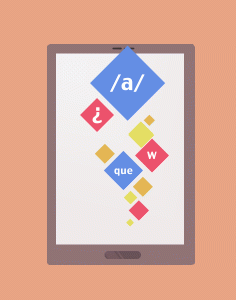App aims to improve vocab

Campus innovation and technology have come together for the development of a smartphone application, called VocApp, aimed at expanding student vocabulary.
 Campus innovation and technology have come together for the development of a smartphone application, called VocApp, aimed at expanding student vocabulary.
Campus innovation and technology have come together for the development of a smartphone application, called VocApp, aimed at expanding student vocabulary.
The app was born out of an idea by Nadine LeGros, educational developer with intercultural communication and Boba Samuels, former manager of the Writing Centre, to aid international students with expanding their vocabulary.
“We were initially thinking about resources that would support the international students, but then we very quickly realized that the domestic undergraduate students also really needed some support with their vocabulary,” said LeGros. “And so we just thought it would be great having an app where the students would have a word a day downloaded to them.”
The words, which come from an academic vocabulary list found through research, are accompanied by a definition and example sentences to simplify comprehension as much as possible.
“When you look at a dictionary, sometimes you can hit circular definitions where it says like now go look at this definition, and then you’re back to the old one,” said Haydn Lawrence, a PhD student at Wilfrid Laurier University and the principle developer of the program.
“So one of the biggest things was creating a way to show how these words are used, in a very well thought out but easy way.”
Following an initial launch in October 2013, the Writing Centre paired with the department of communications, public affairs and marketing to upgrade the graphics and layout of the app.
The recent re-launch of the app included not only these changes, but the addition of a Spanish language edition of the app as well, both available for free download on both Apple and Android platforms.
“When I saw [the English language app], I thought I have to do this for Spanish too,” said Maria de Luna Villalón, an assistant professor of Spanish. “I was thinking basically of first-year Spanish students, and how this would be useful for them to use in the classroom and in their tutorials.”
The Spanish app, which was created by de Luna Villalón and undergraduate student Biljana Josifova was funded by the languages and literature department. It is also tailored to the vocabulary first-year Spanish classes teach.
Though only recently launched, staff have been quick to share the new technology with students, integrating it into their classrooms by using the categorized vocabulary and cloud technology to create interactive word banks and sentences.
“[Students] find it useful, so that’s the most important part. This specific Spanish VocApp was started specifically for them, the first-year Spanish students at Laurier, so that they can have another resource and mobile learning is something that’s really a trend recently,” said de Luna Villalón.
De Luna Villalón said it’s helped with student interaction within the classroom as well.
“It’s nice because usually you have to ask a specific student to speak up, to participate, but in this case it was like slow down.”


